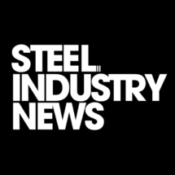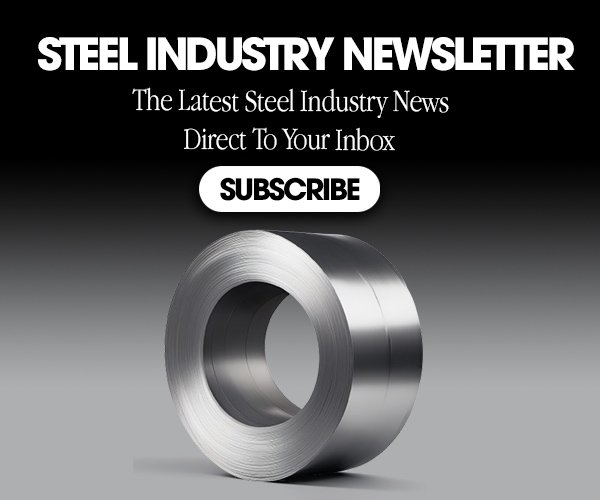Recent price increases announced by by Nucor Corporation and Cleveland Cliffs have indicated an upward pricing shift in the market. This blog post will explore the significance of Nucor’s latest price hike for CSP HRC, exploring the underlying factors and their potential implications.
Nucor’s Price Increase
Nucor, a leading steel producer in the United States, has once again raised its CSP HRC base price. Effective September 23rd, the price has been increased to $730/ton. This marks a $10/ton increase from the previous week’s price of $720/ton. This upward trajectory follows a series of price adjustments in recent months, indicating a potentially shifting market dynamic.
Historical Price Trends
To better understand the context of Nucor’s recent price increase, let’s examine the historical price trends for CSP HRC:
| Date | CSP HRC Base Price (Most Mills) | Change from Previous Week |
|---|---|---|
| September , 9th 2024 | $720/ton | Up $10/ton |
| August 26th, 2024 | $710/ton | Up $20/ton |
| August 5th, 2024 | $690/ton | Up $15/ton |
| July 29th, 2024 | $675/ton | Up $25/ton |
| July 15th, 2024 | $650/ton | Down $20/ton |
| July 1st, 2024 | $670/ton | Down $10/ton |
| June 24th, 2024 | $680/ton | Down $35/ton |
| June 17th, 2024 | $715/ton | Down $65/ton |
| June 3rd, 2024 | $780/ton | Up $10/ton |
As shown in the table, the price of CSP HRC has experienced fluctuations in recent months, with a general upward trend in the past few weeks.
Cleveland Cliffs’ Pricing Strategy
Cleveland Cliffs, another major player in the U.S. steel industry, has also announced its pricing for its October books. The company is seeking $750/ton for HR products, which is currently $20/ton higher than Nucor’s pricing. This suggests that both companies are anticipating continued upward pressure on steel prices. Nucor may continue to inch up their price to match Cleveland Cliffs $750/ton in the coming weeks. Only time will tell!
Implications of the Price Hike
The recent price increases by Nucor and Cleveland Cliffs have far-reaching implications for various sectors:
- Manufacturing Costs: Industries that rely heavily on steel, such as construction, automotive, and manufacturing, will likely experience increased costs.
- Consumer Prices: The higher cost of steel could eventually be passed on to consumers in the form of increased prices for goods and services.
- Global Trade: The price increases could impact global trade dynamics, as countries may seek to import steel from regions with lower prices.
Factors Influencing the Price Hike
Several factors are converging to fuel this upward trend in steel prices:
1. Increased Demand
- Infrastructure Projects: Government initiatives aimed at improving infrastructure, such as road construction, bridge repairs, and public transportation, are driving a surge in demand for steel products.
- Construction Activity: The housing market, buoyed by low interest rates and increased demand, is also contributing to the consumption of steel for building materials.
- Automotive Manufacturing: The automotive industry, a major consumer of steel, is experiencing a resurgence, leading to increased demand for steel components.
2. Inventory Reductions
- Supply-Demand Balance: Steel producers may be strategically reducing their inventories to create a supply-demand imbalance, thereby justifying higher prices.
- Market Speculation: Anticipating future demand increases, producers might be holding back inventory to capitalize on potential price rises.
3. Economic Indicators
- Interest Rates: The Federal Reserve’s monetary policy, particularly interest rate decisions, can significantly impact the steel market. Lower interest rates like the recent 0.5% percentage point reduction on 9/18/24 can stimulate economic activity, leading to increased demand for steel products.
- GDP Growth: A robust GDP growth rate indicates a healthy economy, which often translates into higher steel consumption.
Conclusion
The upward trend in steel prices, as evidenced by the recent price hikes by Nucor and Cleveland Cliffs, is a reflection of the evolving dynamics within the steel industry. While the reasons behind these increases are multifaceted, the growing demand for steel products and potential supply constraints suggest a continued upward pressure on prices. As the market continues to evolve, it will be crucial to monitor these developments closely to understand their long-term implications.
For the latest steel news updates on Steel Pricing and other steel trends, be sure to follow Steel Industry News
Check out some of our other articles on the Steel Market:
Pricing Update: Cleveland Cliffs and Nucor Announce Increases
Steel Prices Rebound: Nucor and Cleveland-Cliffs Announce Price Increases
Steel Pricing Update: Nucor and Cleveland-Cliffs Lead the Way
Nucor CSP Price Update: Downward Trend Continues
Summer Slowdown: Exploring the Factors Behind the Steel Market Downturn
Steel Prices Slide: Nucor CSP Dips Again, Construction Slowdown a Potential Culprit
Steel Price Update: Nucor CSP Dips, Cleveland Cliffs Follows With August Price Decrease
Steel Prices Continue Decline Pressured By Housing Market Slowdown
Nucor’s CSP: A Game Changer in Steel Price Transparency?









